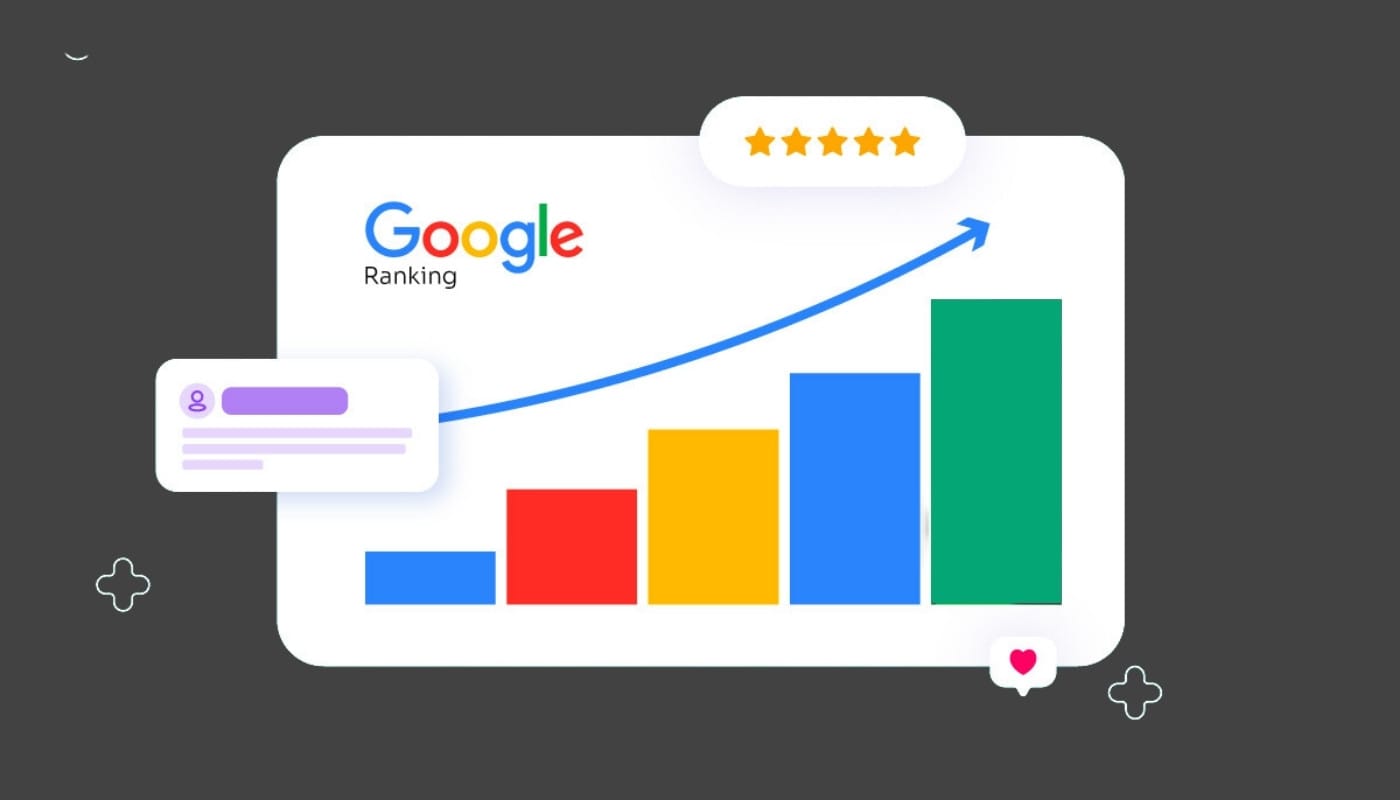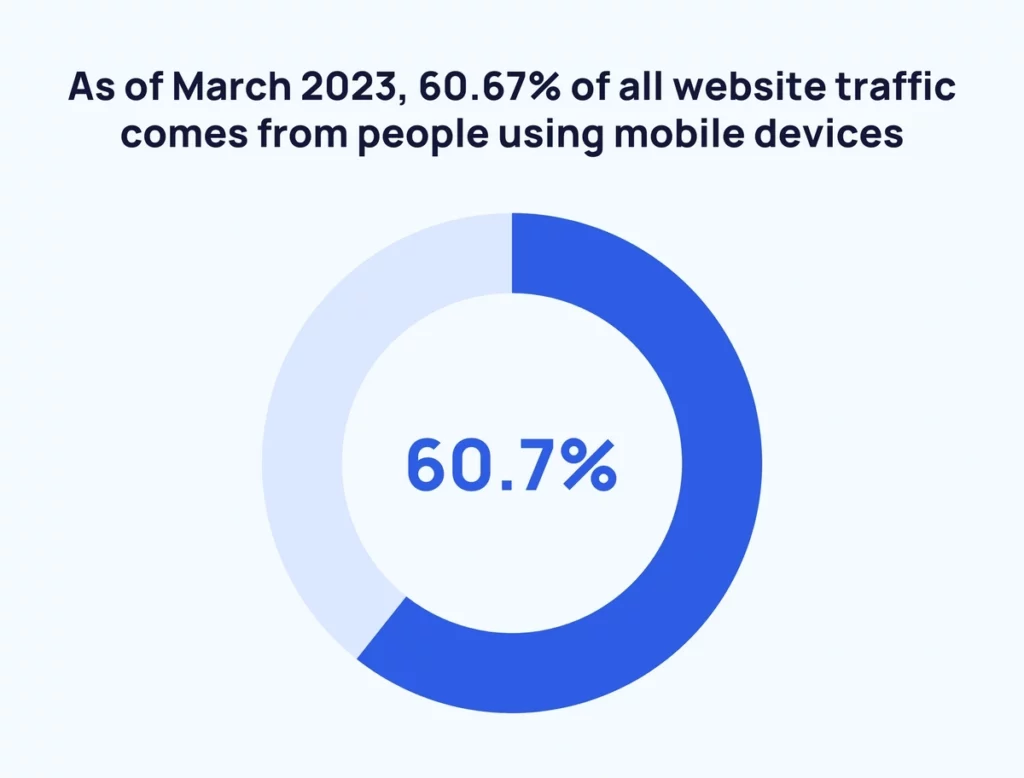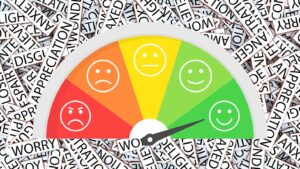Missing Out on Google Ranking? Here Are 4 Possible Reasons

High Google ranking is every website owner’s goal. According to Statista’s data, as of January 2023, Google holds approximately 84.69% of the global market share, making it the most dominant search engine by a significant margin. However, merely having a website does not guarantee a Google ranking. It is crucial for organic website traffic that potential customers can easily find your website.
In this article, we will discuss some commonly overlooked reasons why your website may be missing out on Google ranking and how to fix them.
1. Your Website is New
Your new website may not be showing up on Google because it’s still a recent launch. Google needs to verify a new website’s credibility and authority before it starts appearing in search results. This process can take several weeks to months, and during this time, your website’s visibility may be zero in organic search results for specific keywords.
When you launch a new website, it’s essential to use good SEO practices, like optimising your website’s on-page elements and making helpful, high-quality content. Even with proper search engine optimisation (SEO) practises in place, keep in mind that it takes time for Google to recognise and rank a new website. This is because Google’s algorithms give more weight to sites that have been around for a while and have a good reputation.
Even though it can be frustrating for website owners to see that their site doesn’t show up on Google, it’s essential to be patient and keep using SEO strategies that work. This may include creating high-quality content, building backlinks, and improving the website’s user experience. As the website gains more traction and authority over time, its visibility and ranking on Google will improve, making it more visible to potential customers searching for products or services related to its niche.
2. You’re Not Following SEO Best Practices for Google Ranking
Search Engine Optimisation (SEO) is crucial in ranking your website well on Google’s search engine results pages. If your website’s visibility on Google is poor, one of the most common reasons may be that you’re not following SEO best practices. SEO best practices involve optimising your website to make it more visible to search engines like Google.
- Poor website structure and navigation: Google values user experience and prioritises websites that are easy to navigate and provide a good user experience. If your website is poorly structured and difficult to navigate, it will negatively impact your Google ranking. A well-organised website structure helps Google crawl your website effectively and understand the content on your website. A clear and concise menu, internal linking, and well-labelled categories and tags can significantly improve your website’s structure and navigation.
- Poor content quality: Google’s primary goal is to provide its users with relevant and valuable information. Your website needs relevant content to rank well on Google. Creating high-quality content that addresses your audience’s needs and pain points is crucial to improve your Google ranking. Regularly updating your website with fresh and relevant content is also essential to show Google that your website is active and valuable. As it turns out, Google only loves you when everyone else loves you first.
- Lack of fresh and updated content: Google prioritises websites that regularly update content and provide fresh and relevant information to their audience. A lack of fresh and updated content can negatively impact your Google ranking, as it does not demonstrate your expertise or authority in your industry. To ensure fresh and updated content, create a content strategy that includes regular updates, blog posts, and other relevant content for your audience.
- Duplicate content: Duplicate content refers to content that appears on multiple pages on your website or other websites. Google penalises websites with duplicate content, as it is not original or valuable to users. Avoid duplicate content by ensuring that each page on your website has unique and original content that provides value to your audience.
- Thin content: Thin content refers to pages on your website with minimal content or low-quality content that does not provide any value to your audience. Google tend to penalise such sites and lower their ranking on SERPs. Product pages on e-commerce websites often have thin content. If you run an e-commerce site, a pro tip is to provide detailed and informative product descriptions, related products or recommendations and encourage user-generated content like product reviews. Using accordions is a neat and structured way to tuck long product descriptions away, enabling easy navigation and keeping the page visually appealing while providing necessary information.
- Keyword stuffing: Keyword stuffing involves overusing keywords in web content to manipulate Google ranking. This black-hat SEO technique violates Google’s guidelines and can lead to penalties or deindexation. Instead of keyword stuffing, focus on creating high-quality content that includes relevant keywords naturally.
- Slow website speed: Website speed is an important ranking factor for Google. Slow-loading websites can negatively impact the user experience and lead to high bounce rates. To improve your website’s speed and performance, optimise your images, use a content delivery network (CDN), and minimise the number of HTTP requests.
- Poor backlink profile: Backlinks are the links from other websites that point to your website. Google uses backlinks to determine the relevance and authority of a website. A poor backlink profile with low-quality or irrelevant backlinks can negatively impact your Google ranking. To improve your backlink profile, focus on creating high-quality content that is shareable and relevant to your audience. Reach out to influencers and other websites in your industry to promote your content and earn backlinks.
3. You’ve Unintentionally Blocked Google
One of the most common reasons your website may not show up on Google could be that you are unintentionally blocking Google from crawling and indexing your website. This can happen if you have made changes to your website’s code or settings that prevent Google from accessing your content. One common example is an error in the robots.txt file, a simple text file placed on your web server that tells search engine crawlers like Googlebot if they should access a file. If there is an error in your robots.txt file, Google won’t be able to index your site, so it won’t show up in the organic search results.
To fix this issue, check your website’s robots.txt file and ensure it is configured correctly. You can do this by using Google Search Console, which provides information about how Google crawls and indexes your website. Once you’ve found the problem, you can change your website’s settings so that Google can get to your content and index it. By doing so, you can improve your website’s visibility and ensure that it shows up in Google search results, which can help you attract more traffic and customers to your website.
4. Lack of Mobile Optimisation

According to a recent report, 60.67% of website traffic comes from mobile devices, and 92.3% of internet users access the internet using a mobile phone. Therefore, optimising a website design for mobile devices is crucial for providing a better user experience and improving your website’s visibility and Google ranking.
The following are some common issues related to a lack of mobile optimisation that may negatively impact your Google ranking:
- Poor user experience: A web design that is not optimised for mobile devices can be difficult to navigate and read on a small screen. This can result in a poor user experience, leading to high bounce rates and negatively impacting your Google ranking.
- Slow loading speed: Mobile devices typically have slower internet connections than desktops, and a website not optimised for mobile devices can lead to slow loading times. Slow loading times can negatively impact your ranking, as Google prioritises websites that provide a better user experience.
- Unresponsive web design: An unresponsive design means your website does not adapt to different screen sizes, resulting in a poor user experience on mobile devices. This can lead to high bounce rates and negatively impact your Google ranking.
- Unplayable content: Some content, such as Flash-based content, may not be playable on mobile devices. This can result in a poor user experience and negatively impact your Google ranking.
- Different content on desktop and mobile versions: Different content on your desktop and mobile versions of your website can negatively impact your Google search ranking, as Google prioritises websites with consistent content across all platforms.
To avoid poor mobile optimisation, it’s essential to have a responsive website that loads quickly and provides a seamless user experience across all devices. Here are some best practices to keep in mind:
- Use a responsive design that adapts to different screen sizes and devices.
- Optimise images and other media to reduce load times and improve website performance.
- Use a content management system (CMS) that supports mobile optimisation.
- Use a mobile-friendly font size and typeface.
- Use large buttons and clear navigation menus that are easy to use on a mobile device.
Never Miss a Thing!
Subscribe to our blog for the latest expert tips and digital marketing resources.





